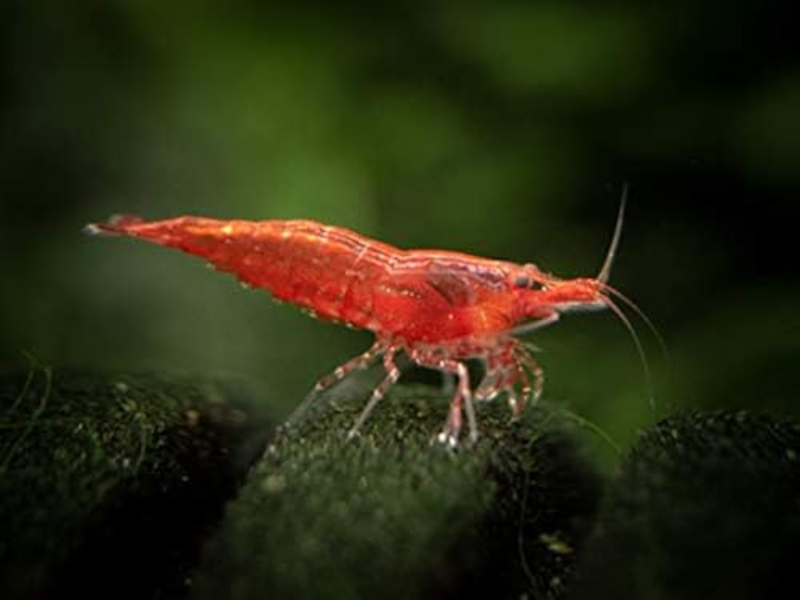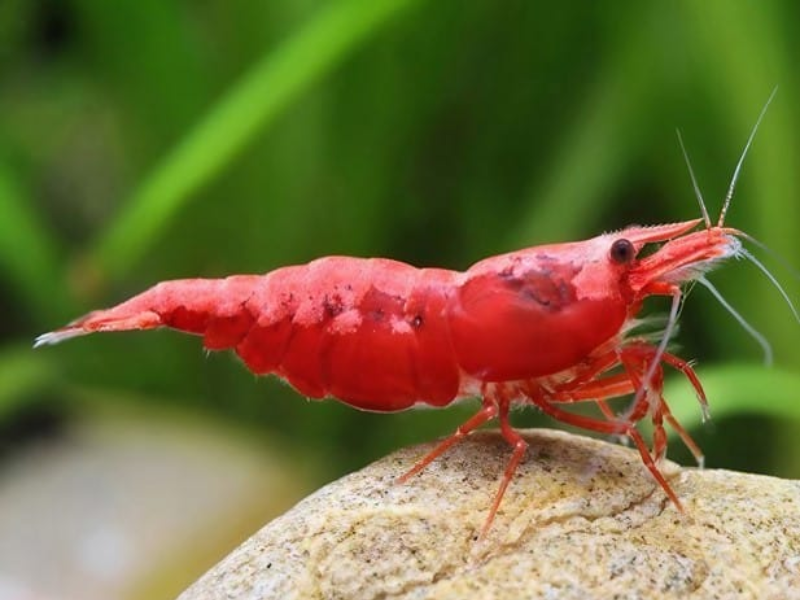Neocaridina davidi
var. Blue Dream

科学分类
快速统计
水族箱建造信息
关于此物种
基本描述
详细描述
Neocaridina davidi(大卫新米虾)原产于亚洲的淡水溪流和池塘,是一种小型的十足目甲壳动物,已成为水族爱好的基石之一。其自然栖息地的特点是水流缓慢、植被茂密、有机碎屑丰富,这些是在家庭水族箱中为其提供最佳健康状态需要复制的关键因素。在人工饲养环境下,它们表现出持续、中等的活动水平,主要占据水体的底层和中层。在这里,它们从事其主要活动:啃食。作为不知疲倦的杂食性动物,它们的饮食包括生物膜、藻类和碎屑。这种食腐行为使它们成为水族箱“清洁工”中不可或缺的一部分,因为它们有助于管理废物并防止藻类过度生长。虽然它们会欣然接受下沉式颗粒饲料、贴片和焯过水的蔬菜等人工食物,但一个拥有充足天然食物来源的成熟水族箱对它们的茁壮成长至关重要。
这些甲壳动物具有明显的社会性,应成群饲养。群体环境不仅能为它们提供安全感,还能让我们观察到它们有趣的社会动态。尽管它们很强健,但对水质参数的突然变化很敏感。保持稳定比达到某个特定的数值更重要,不过它们偏爱中性至弱碱性的pH值和软至中等硬度的水。它们的新陈代谢缓慢,需氧量非常低,因此对水族箱的生物负荷影响极小。这种低废物产生量使得它们可以比许多其他水生动物以更高的密度饲养,并且非常适合种植密集的水草缸,因为它们不会伤害植物。它们温和的性情意味着可以与不会将其视为食物的其他小型、温和的物种混养。适当的照料、稳定的环境和合适的饮食将确保这些迷人的无脊椎动物度过完整、健康的一生。
科学描述
Neocaridina davidi(大卫新米虾)是一种淡水甲壳动物,隶属于匙指虾科(Atyidae),该科属于十足目,以其特化的、适合刮取和收集食物颗粒的螯足而闻名。从形态学上看,该物种体型较小,成体最大尺寸也相当有限。它呈现出侧扁的体型。作为节肢动物门的一员,它拥有几丁质外骨骼,必须通过蜕皮来定期脱落以实现生长。
从生理学上看,N. davidi 非常适应稳定的淡水环境。它对从弱酸性到碱性的广泛pH值范围以及广泛的水硬度范围具有显著的耐受性。然而,它是一种狭盐性生物,对盐度有生理上的限制,这使其只能生活在淡水生境中。该物种的特点是代谢率低和耗氧量极低,这有助于降低其在封闭水生系统中的生物负荷。这些特性使其能够在水流缓慢的环境中繁荣生长,这与其原生亚洲池塘和缓流溪的典型环境一致。
从生态学上看,N. davidi 是一种底栖和附底杂食性动物,作为碎屑消费者和初级消费者发挥着至关重要的作用。其饮食主要包括生物膜、附生生物、浮游植物和腐烂的有机物(碎屑)。这种摄食行为对于其生态系统内的营养循环至关重要。它是一种群居物种,依赖群体生活来获得安全感和繁殖成功。根据《世界自然保护联盟濒危物种红色名录》,Neocaridina davidi 被列为“无危”(LC),表明它分布广泛,在其自然分布区内未面临重大威胁,确保了其野生种群的稳定。
繁殖描述
在水族箱环境中繁殖 Neocaridina davidi(大衛新米蝦)被認為是一個簡單直接的過程,這使其成為剛開始嘗試繁殖無脊椎動物的愛好者的絕佳對象。它們是多產的繁殖者,只要在一個穩定、成熟且水質條件適宜、飲食均衡的水族箱中,它們通常無需任何特殊干預即可繁殖。
為促進繁殖,建議從一個健康的雌雄混合群體開始。成熟個體的兩性異形很明顯。與雄性相比,雌性通常體型更大,腹部更粗壯、更圓潤。雌性的一個關鍵標識是“卵鞍”,這是頭部後方可見的綠色或黃色區域,由卵巢中未發育的卵子組成。雄性通常體型較小、更纖細,且顏色通常不那麼鮮豔。
繁殖週期始於雌性蛻皮後,此時它會向水中釋放費洛蒙(信息素),以表明其已準備好交配。然後雄性會注入精子,雌性會將卵子從卵鞍中排出,經過精子,然後附著在其腹側的游泳足(腹足)上。在此階段,雌性被稱為“抱卵”。它會攜帶這窩卵數週,用游泳足不斷地為它們搧風,以提供氧氣並保持清潔。在此期間,至關重要的是不要讓雌性受到壓力,否則可能導致它棄卵。
一旦抱卵期結束,卵就會孵化成與成蝦形態完全相同但體型微小的幼蝦;它們沒有幼體階段。這些幼蝦一出生就立即獨立,並開始啃食生物膜和微生物。為了獲得高的成活率,強烈建議使用種有莫斯等細葉植物的密集水草缸,因為它能為幼蝦提供充足的啃食表面積和大量躲避潛在捕食者的藏身之處。過濾系統應對蝦安全,最好是海綿過濾器(俗稱水妖精),或在過濾器進水口套上過濾棉,以防止微小的幼蝦被吸入。雖然幼蝦可以在成熟的缸中靠天然食物生存,但補充粉末狀幼蝦糧或精細碾碎的薄片飼料可以促進其生長和提高存活率。
性二型
相关图片

Yellow Golden Back
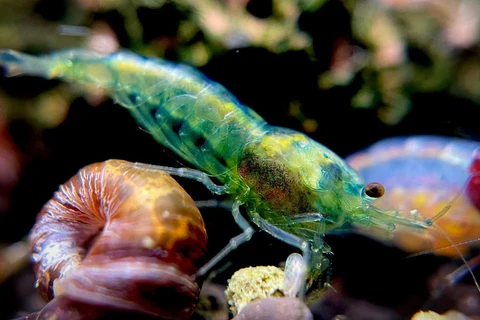
Green Jade
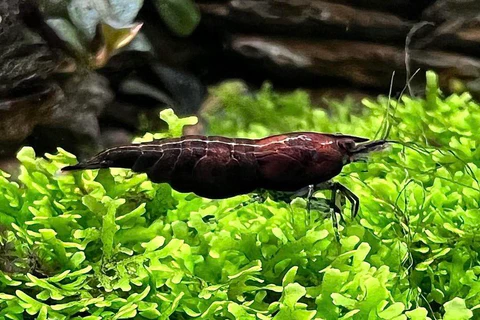
Black Rose
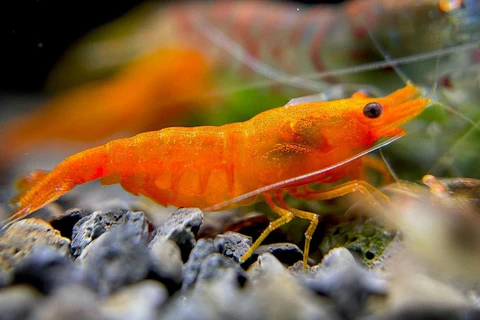
Orange Sakura
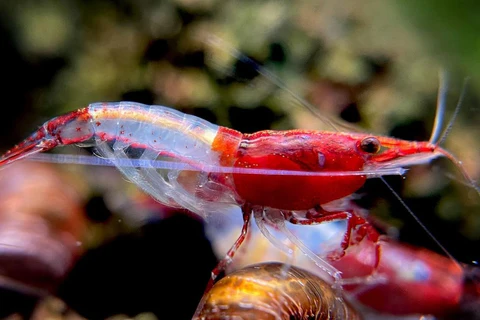
Rili

Blue Dream
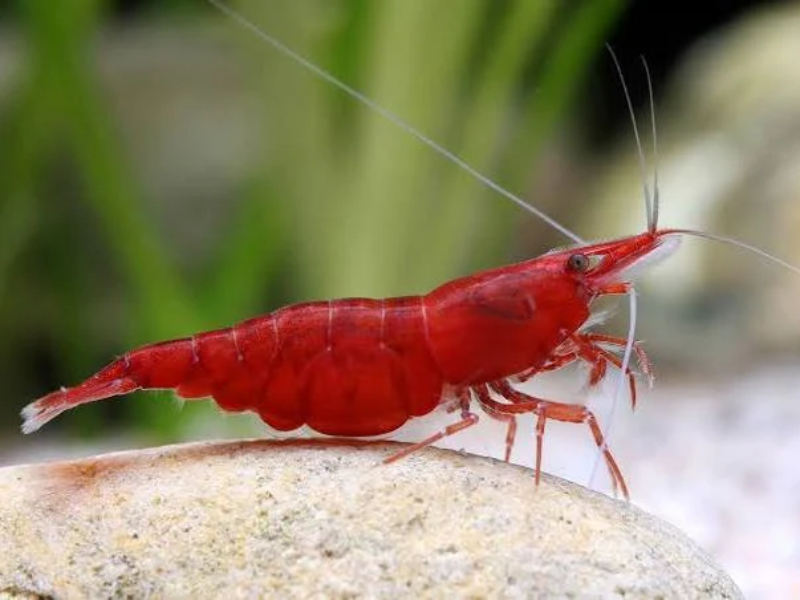
Red Cherry
生成可打印卡片
为此生物创建可打印卡片,以便在您的商店或水族箱中展示。卡片包含二维码,可快速访问更多信息。
